15 Best Green Building Projects Around the World
Table of Contents
Green building architecture projects have surfaced in the last few decades as a symbol of the world’s preoccupation for ecological affairs. However, just as solutions to climate change have emerged, so have those who capitalize on the need for green alternatives. Here we´ll look at 15 examples of world-renowned green architecture that raises the bar for what architects and builders can do to help the planet.
What is Green Architecture?
Green architecture refers to an ecologically friendly approach to design and building within the construction industry. Such practices aim to reduce human impact on the natural environment in all its phases, from the design phases to the construction and later operation and maintenance. This ensures the permanence of natural resources for future generations.
According to Ragheb, El-Shimy, & Ragheb, 2015, a sustainable green building may have some of these characteristics:
● Ventilation systems designed for efficient heating and cooling
● Energy-efficient lighting and appliances
● Water-saving plumbing fixtures
● Landscapes planned to maximise passive solar energy
● Minimal harm to the natural habitat
● Alternate power sources such as solar power or wind power
● Non-synthetic, non-toxic sustainable materials
● Locally-obtained woods and stone
● Responsibly-harvested woods
● Adaptive reuse of older buildings
● Use of recycled architectural salvage
● Efficient use of space
Read more: Unbelievable Parametric Furniture That Are Perfect Examples Of Innovation
Not everything that shines is… green?
Often when looking at projects that are labelled as “green”, we find that a lot of them share the same characteristics: shiny renders with lots of trees, usually mega-projects, and oftentimes in places where sustaining them would be gruesome. This, of course, would seem to go against the definition that was previously stated. So, to not leave any room for doubt, let's look at something that is not green architecture.
That being, greenwashing.
Greenwashing refers, to a trend of marketing stunts that use the principles of sustainable development as the main selling point for an otherwise not at-all sustainable project, or products that exaggerate their aesthetics and benefits by including lots of greenery and eco-friendly jargon.
Or as Furlow describes it:
“Greenwashing is the dissemination of false or incomplete information by an organization to present an environmentally responsible public image. “ (Furlow, 2010)
We’ve seen many examples of shiny utopian pitches for buildings around the world, like those that promise to be an eco-friendly paradise in the middle of nowhere (See NEOM City), buildings that end up in disaster (See Chengdu green buildings), or automobile advertisements that might even be seen as post-ironic humour from how tone-deaf they are (See Kia).
Read more: How is Computational Design Used to Achieve Sustainability?
So, what does a green building look like?
At this moment we are familiarized with what is and what is not green architecture. And to perfect our differentiation skills, we can look at some of the best examples of green buildings in the world
Green buildings in the USA
1. Torre Reforma by Benjamín Romano, Mexico City, Mexico
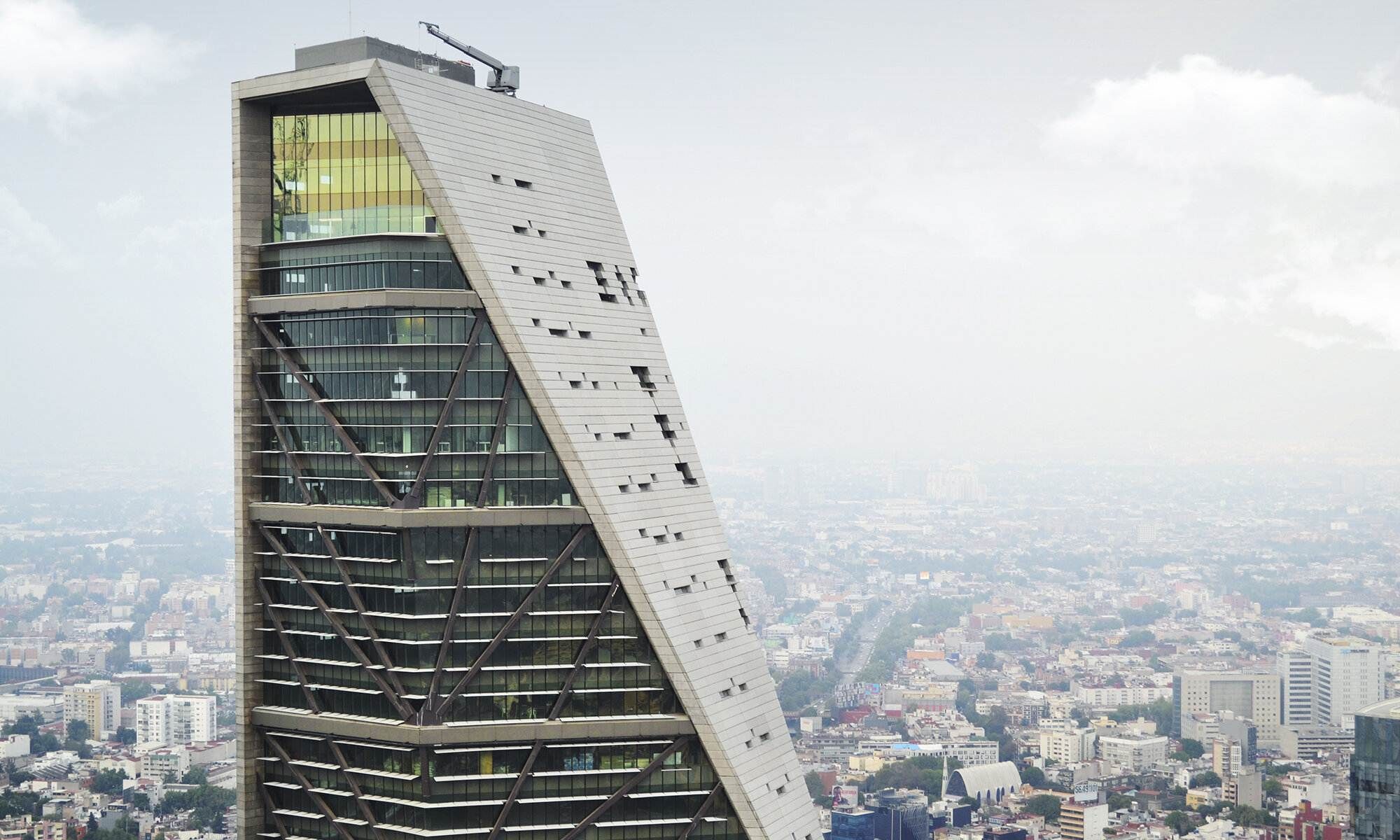
Currently the fourth tallest building in Mexico, with a total height of 246 meters, the Torre Reforma overlooks one of the megalopolis's main vital arteries. This skyscraper, which sits atop a colonial-era construction, was recognized in 2016 with the LEED platinum certification, which is only given to projects with highly efficient resource management.
To mention some accolades of this project: The concrete walls that act as foundations reduce the heat entering the building, which saves up to 20% on energy consumption. 94% of the areas have natural lighting, and 100% of wastewater is treated to tertiary standards and reused within the building. Plus, the building is within walking distance of metro lines and other services.
2. Albion District Library by Perkins+Will, Toronto, Canada

Located in Toronto, this haven for recent immigrants managed to improve the community that it serves by providing a landmark where people could go to learn and do recreational activities.
The library features a sloping green roof, photovoltaic arrays integrated into the roof, native tree species, bicycle infrastructure, and the creation of a wetland to collect stormwater for irrigation. Overall, the building managed to reduce the energy consumption by 40% compared to the national average without sacrificing comfort.
3. Transoceánica Building by +arquitectos, Santiago de Chile, Chile
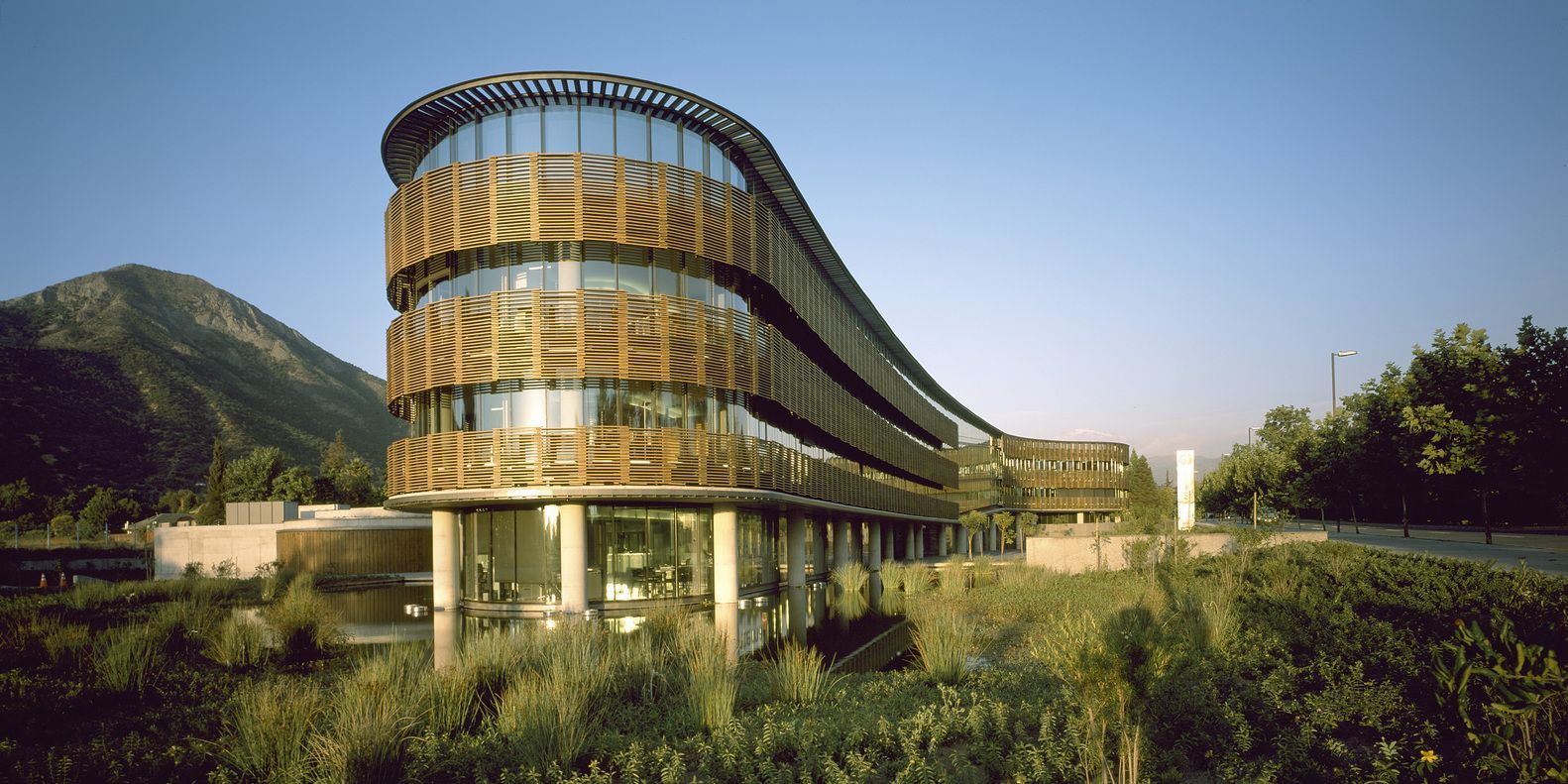
This office building’s design focused greatly on developing a shape that makes the most of its orientation, privileging natural light, ensuring views of the outside from all rooms, and developing a careful treatment of facades to avoid unwanted thermal gains or losses. A cutting-edge domotic system controls lights inside the complex according to the levels of sunlight outside preventing the usage of artificial lighting when it's not needed.
Its energy efficiency is so good, that the building manages to save up to 70% in energy costs, which granted it the LEED Gold certification, the first building in Chile to do so.
Green buildings in Africa
4. Floating School by Kunlé Adeyemi, Lagos, Nigeria
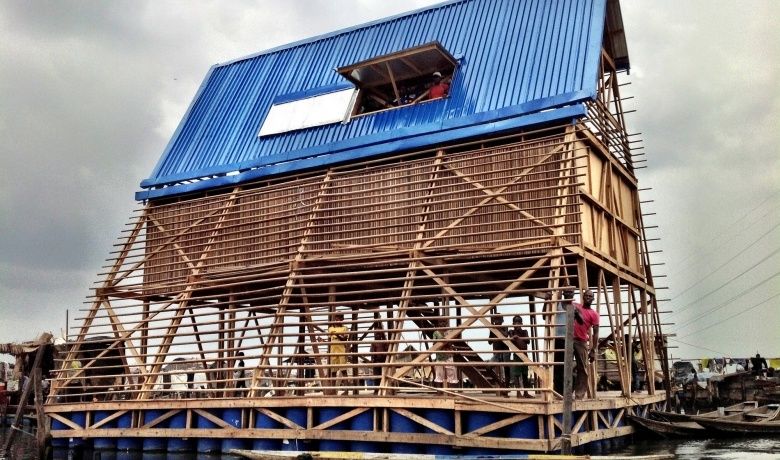
With the main challenge of providing a school for a community that lives in a flood-prone city, one that sees itself greatly threatened by the rising sea levels, the architect Kunlé Ayedemi created an alternative solution to the traditional scheme of schools. Built from locally sourced wood, bamboo, and 256 plastic buoys made from barrels, this project doesn’t stop at its structural solution being sustainable. There are other strategies that make use of new technologies like solar panels to provide electricity, and rainwater harvesting systems to help with sanitation. This is an excellent project to showcase the combination of both traditional and modern practices to respond to contemporary challenges.
This school served 100 students from all across the region since its opening in 2015. Due to heavy rain, however, the structure collapsed in June of 2016.
The project has received multiple awards for its design, including design of the year in 2014. Two more design iterations in 2016 and 2018, adding improvements to the structural integrity of the school and overall design.
5. ‘Inno-native’ Home by Joe Osae-Addo, Accra, Ghana
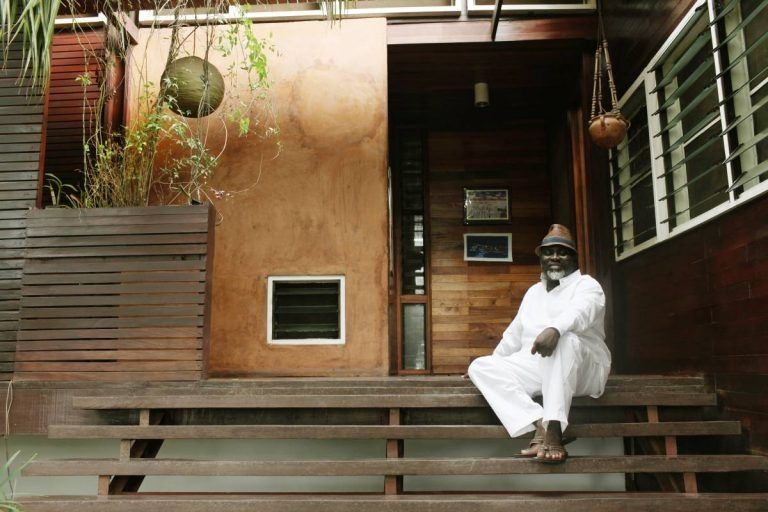
Dedicated to his family, this home was built using materials found within the immediate context of the site, like timber, mud, and wood eliminating the need for transportation of materials from other places or the city, and reducing the carbon emissions in total.
The design follows the “no air-conditioning” philosophy by raising the structure three feet off the ground on a wooden deck to allow under-floor cooling. Wood screens and louvre-like panels on floor-to-ceiling windows allow for great cross ventilation, removing the need for artificial climate systems. An excellent example of ancient practices brought to modern times.
6. Eastgate Centre by Mick Pearce & Arup Associates, Harare, Zimbabwe
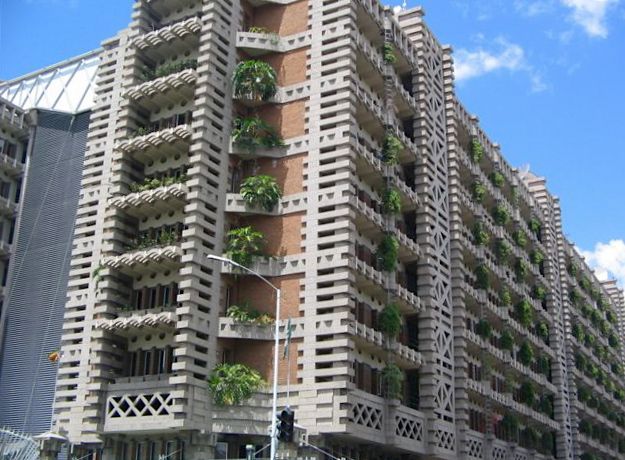
The Eastgate Centre is an innovative design inspired by the self-cooling mounds of African termites and indigenous masonry. This building implements passive architecture and energy-efficient strategies for climate control. This sustainable green building’s construction materials have a high thermal capacity, which enables it to store and release heat gained from the surrounding environment. Additionally, the clay lattice and vegetation in the facade help reduce the heat received.
There are integrated fan systems that run on a cycle scheduled to improve heat storage during the hot daytime and heat release during the chilly overnight. As the outside temperature fluctuates, these design elements help to minimize temperature variations inside the building. Without conventional air-conditioning or heating, the building’s temperature stays regulated all year round, reducing the costs of electricity, and creating a passive cooling system without sacrificing the interior comfort of the users.
Green buildings in Asia
7. Shanghai Tower by Gensler, Shanghai, China
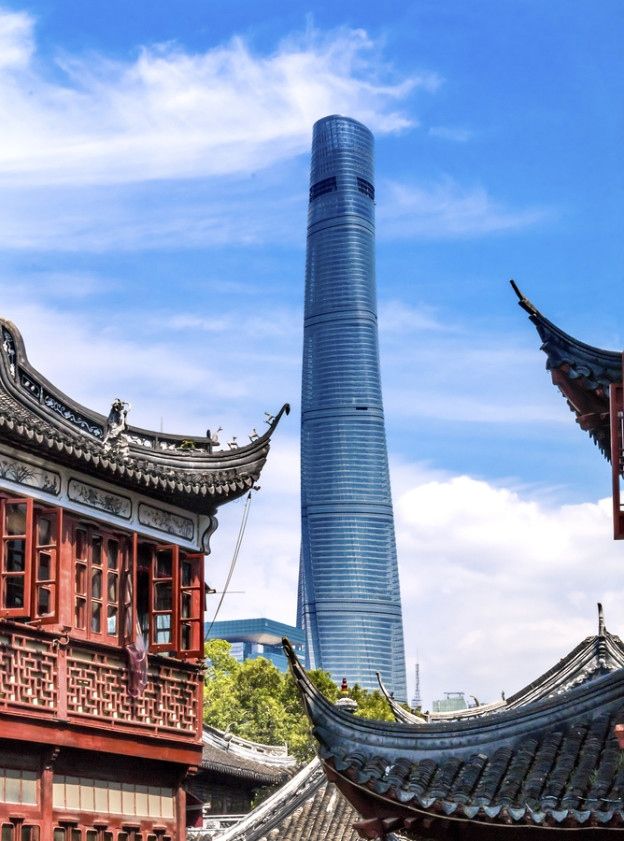
The second tallest building in the world sits in the finance district of the bustling city of Shanghai. The shape of the building features a rotating set of double-skin cylinders sitting one after the other, making a dynamic curved shape that effectively reduces the wind loads by 24%. The double skin of the building provides for enough light and insulation, which in turn reduces the energy needed for the heating and cooling of the tower.
The shanghai tower was certified with the platinum LEED certification in 2016 due to its strategies that allowed it to save $556,000 each year in energy and is one of the most sustainable buildings in China.
8. Asia Square by Denton Corker Marshall, Singapore

Denton Corker Marshall designed Asia Square with sustainability principles in mind. Since opening in 2011, this building has consistently received acclaim as one of Singapore's greenest buildings. Compared to typical commercial structures, Asia Square utilizes 35% less energy.
An on-site biodiesel plant uses the oil collected from tenants' restaurants to generate electricity. The kinetic energy produced by the elevators is also converted back into electrical energy and distributed throughout the system. Water and vapour droplets are also collected from the air-handling units and used to water the green areas.
9. Tokyo Toranomon Global Square by NIHONSEKKEI Inc, Tokyo, Japan
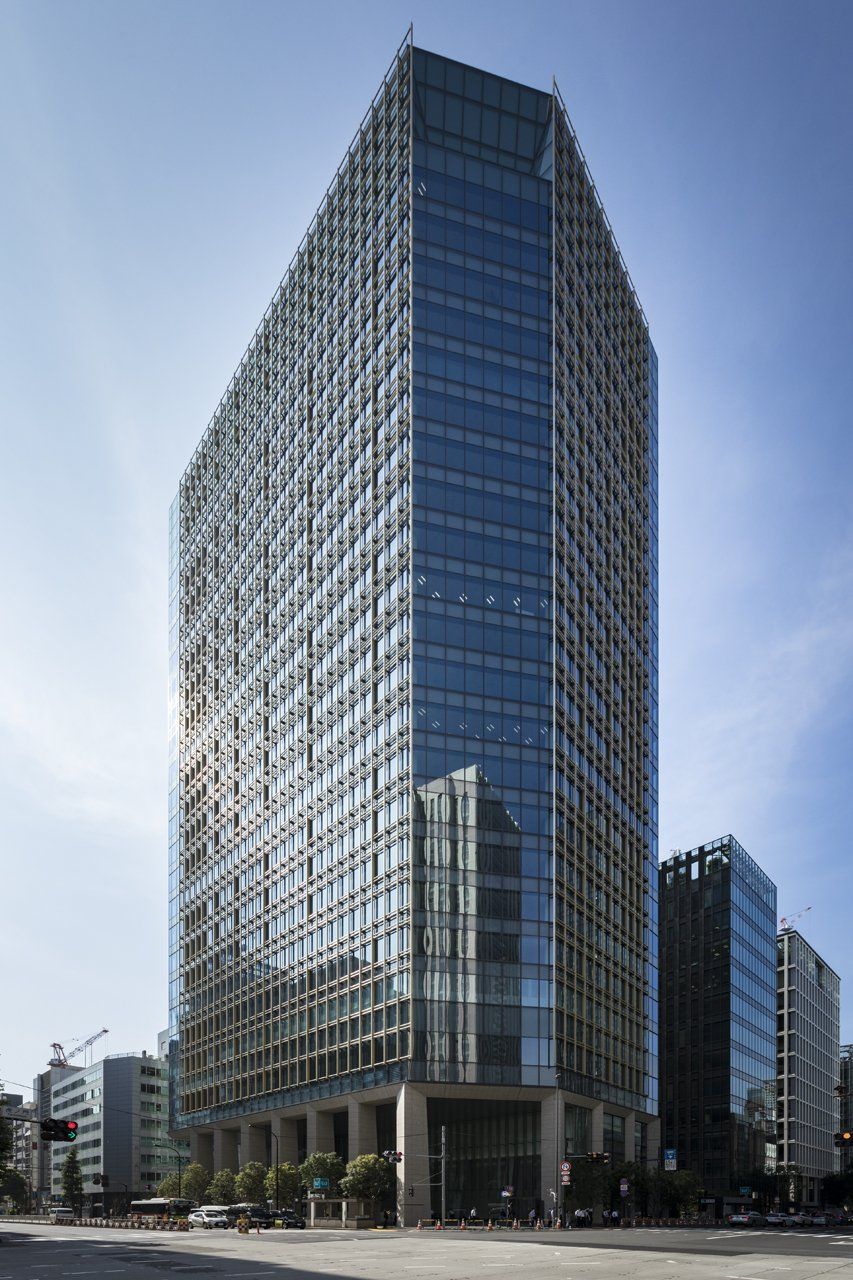
The building‘s designers implemented strategies like installing separate sensitive and latent heat air conditioning systems on the office floors, resulting in air conditioning usage being greatly reduced. The amount of natural ventilation in all the areas is increased by 30%, and energy savings are taken into account by using free cooling based on the weather outside and by controlling CO2 demand. The project building reduced its energy costs by 30.3%, as shown by the aforementioned energy optimization strategies.
In addition to receiving a LEED Gold certification, the project building also received the highest rank 3 in the Tokyo Green Building Program due to its performance in energy regulation. Examples of reviewed initiatives include installing energy-efficient LED lighting fixtures throughout the structure, installing auto-dimming and motion sensor lighting control systems, reducing lighting power in vacant spaces and reusing rainwater
Green buildings in Europe
10. Marco Polo Tower by Behnisch Architekten, Hamburg, Germany
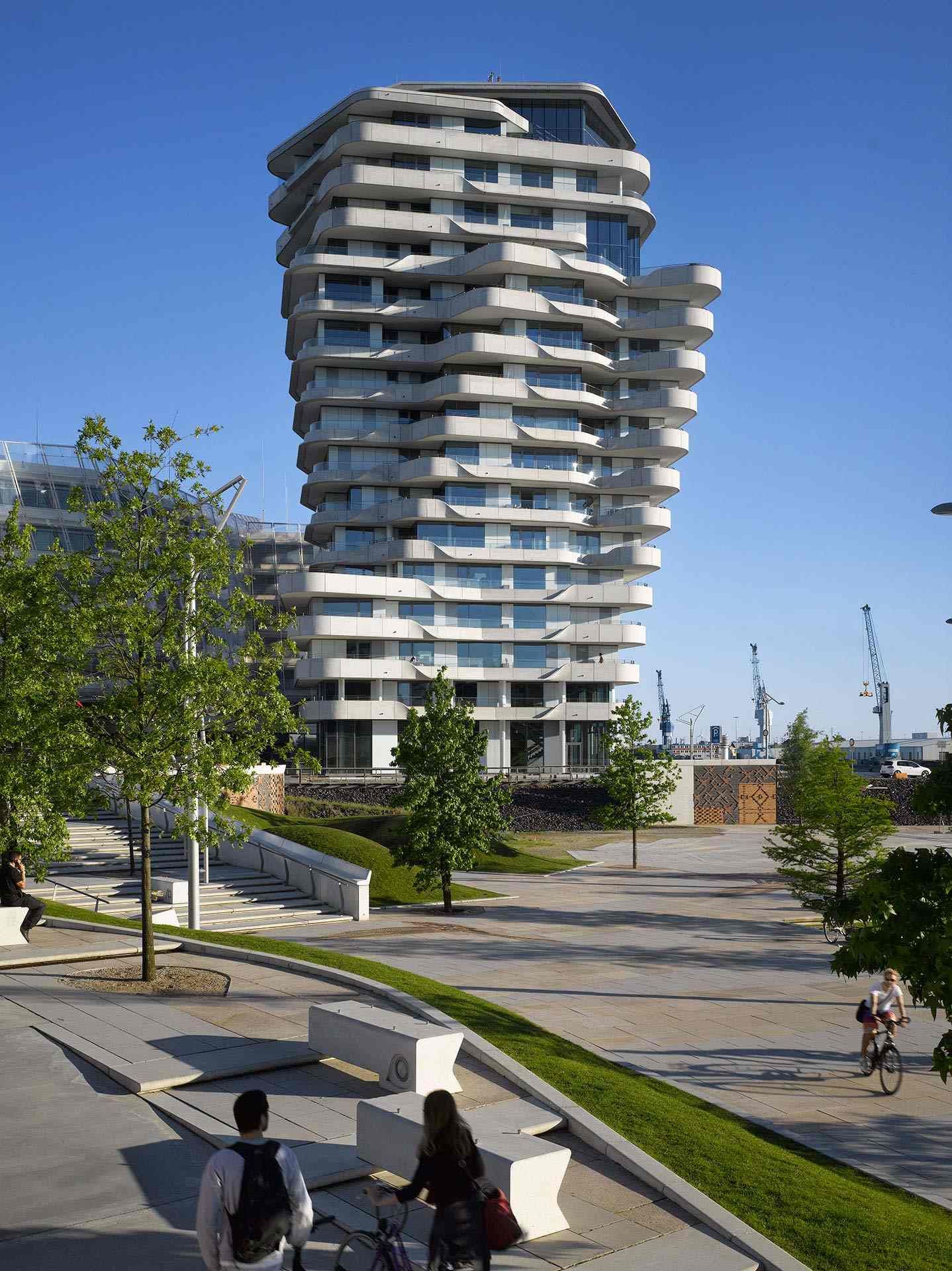
The 55-meter-tall tower serves as a beacon for the nearby Cruise Ship Terminal and the Promenade on Strandkai, It is a distinctive and extraordinary sculptured building centred on delivering opulent living quarters and an all-encompassing sustainable green building design. Additional sunshades are not required because of the overhanging terraces above, that provide shade to the recessed façades from the sun's direct rays.
This building implements strategies like conversion of heat into cooling for the apartments utilizing heat exchangers and vacuum collectors on the roof. Innovative sound-insulated air louvres allow for natural airflow in the sleeping spaces without adding to outside noise pollution.
11. CopenHill by Bjarke Ingels Group, Copenhagen, Denmark
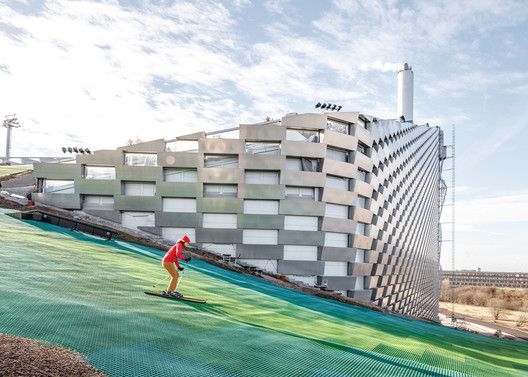
The enormous project, which had a budget of 3.5 billion Danish kroner, was at one point the greatest environmental endeavour in Denmark. Its construction set a precedent for community involvement and context integration. The 41,000 m2 proposal transforms the infrastructure into an architectural monument for the city by including an urban recreation centre and an environmental teaching centre that attracts citizens to appropriate the space.
Furnaces, steam, and turbines beneath the sloping roof transform 440,000 tons of trash annually into clean energy to provide 150,000 homes with heating and power. Aluminium bricks that are 1.2m high by 3.3m broad and arranged like enormous bricks overlapping each other make up the continuous façade of CopenHill
12. The Edge by PLP Architecture, Amsterdam, The Netherlands
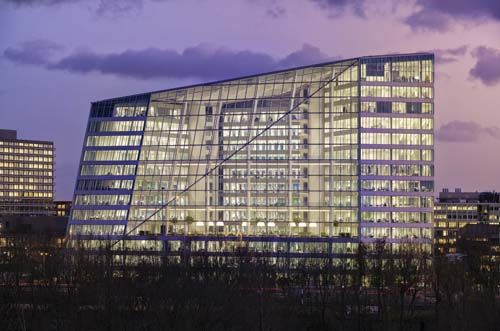
Having the highest BREEAM rating for an office building, The Edge is a landmark for The Netherlands’ sustainability efforts. It is a 40,000m2 office building in Amsterdam's Zuidas business district that was created for the global financial firm Deloitte.
It incorporates numerous smart technologies to create adaptable and intelligent workspaces, some of them are below:
● Incorporating an array of photovoltaic panels in the roof and the south-facing facade, the largest amount of solar panels of any European office building.
● All of the energy required for heating and cooling is provided by an aquifer thermal energy storage system.
● Each luminaire individually within the building is computer controlled by a system created by PHILLIPS, reducing the energy consumption by 50% compared to TL-5 Lighting.
● Passive design that creates unique facades that take advantage of their orientation. Each facade accommodates its design to respond to the amount of sunlight, whether by including solar panels, using louvres to provide shade, or including thicker glass to dampen noise from the exterior.
With these strategies, The Edge uses 70% less electricity than other office buildings,This building received BREEAM certification to assess the most innovative aspects of its design and construction. The building's overall concept has always been to be exemplary, to stand out as a futureproof office that raises standards in the Netherlands as well as internationally.
Read more: How is Computation used in Stadium Design in 2024?
Green Builidngs in Oceania and the Pacific
13. Pixel Building by Decibel Architecture, Melbourne, Australia
The Pixel Building, which was Australia's first carbon-neutral office structure, quickly established itself as a landmark of the city thanks to its cutting-edge tactics that pushed the limits of what is possible in a green building as well as its appealing facade with its multicoloured panels. Vacuum toilets, solar and wind power, thermal cooling, anaerobic digestion of toilet waste, 'Pixelcrete,' a specially designed concrete that contains half the embodied carbon of conventional concrete for the same structural properties, are just a few of the new sustainable building technologies that were implemented.
This project scored 105 LEED points and 105 Green Star points for its resource and energy management.
14. French Polynesia Cultural Centre by Parc Architectes, Papeete, French Polynesia
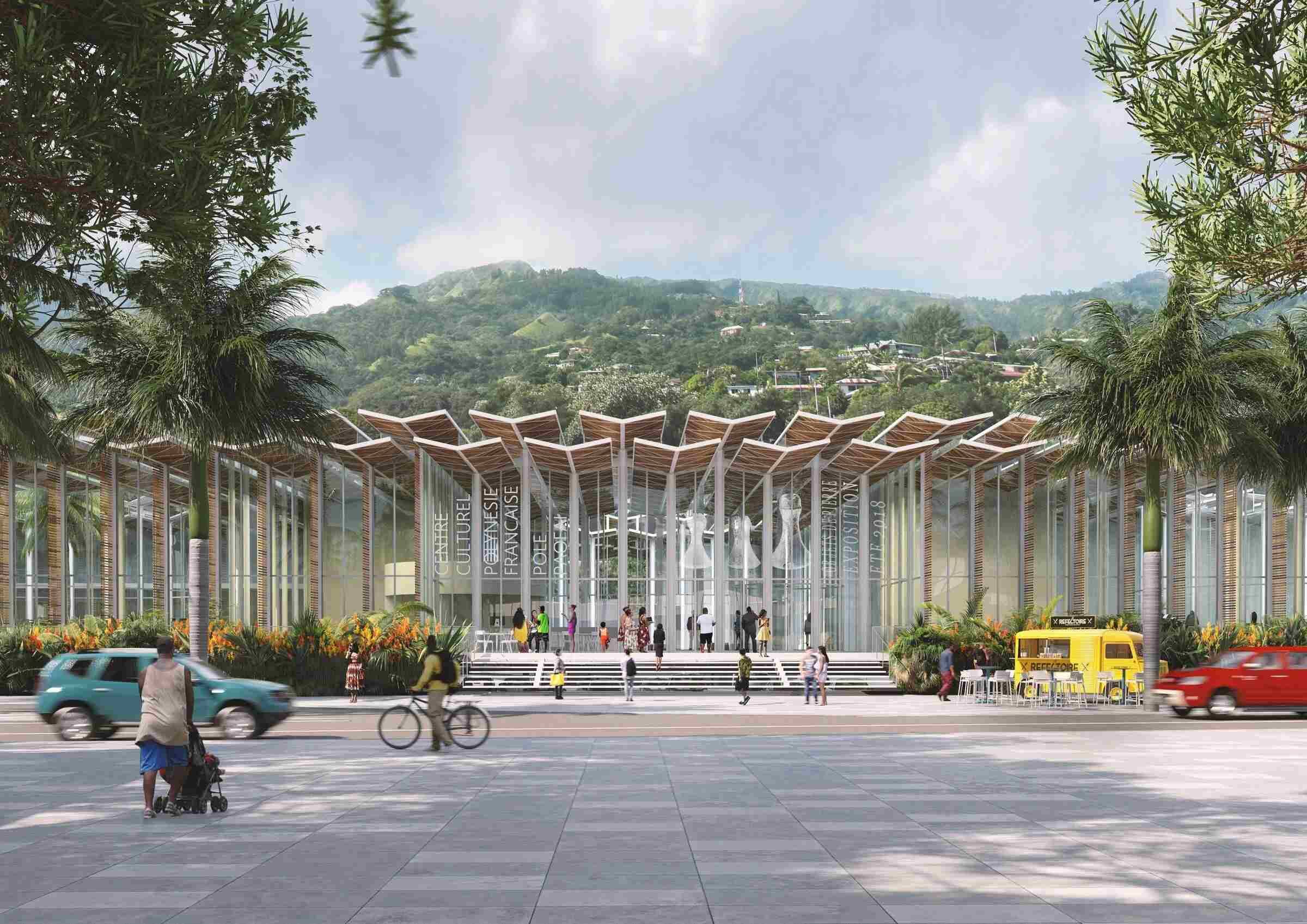
The Polynesian Cultural Centre in Papeete will become Polynesia's first large-scale cultural facility. It consists of different spaces for cultural activities like exhibition rooms, an art centre, a media library, a library, an auditorium, reading rooms, workshops, a coffee place, a store, and offices that simulate a PaePae construction, honouring the traditional culture of the place.
At the heart of each space are large, bright patios with endemic vegetation that brings in views and illumination to the areas. The building features bird-like roofs that collect the rain, this roof design also allows for integration with the local climate, removing the need for artificial climate systems in the entire facility.
The building is expected to finish construction works by 2024.
15. International House by Tzannes, Sydney, Australia
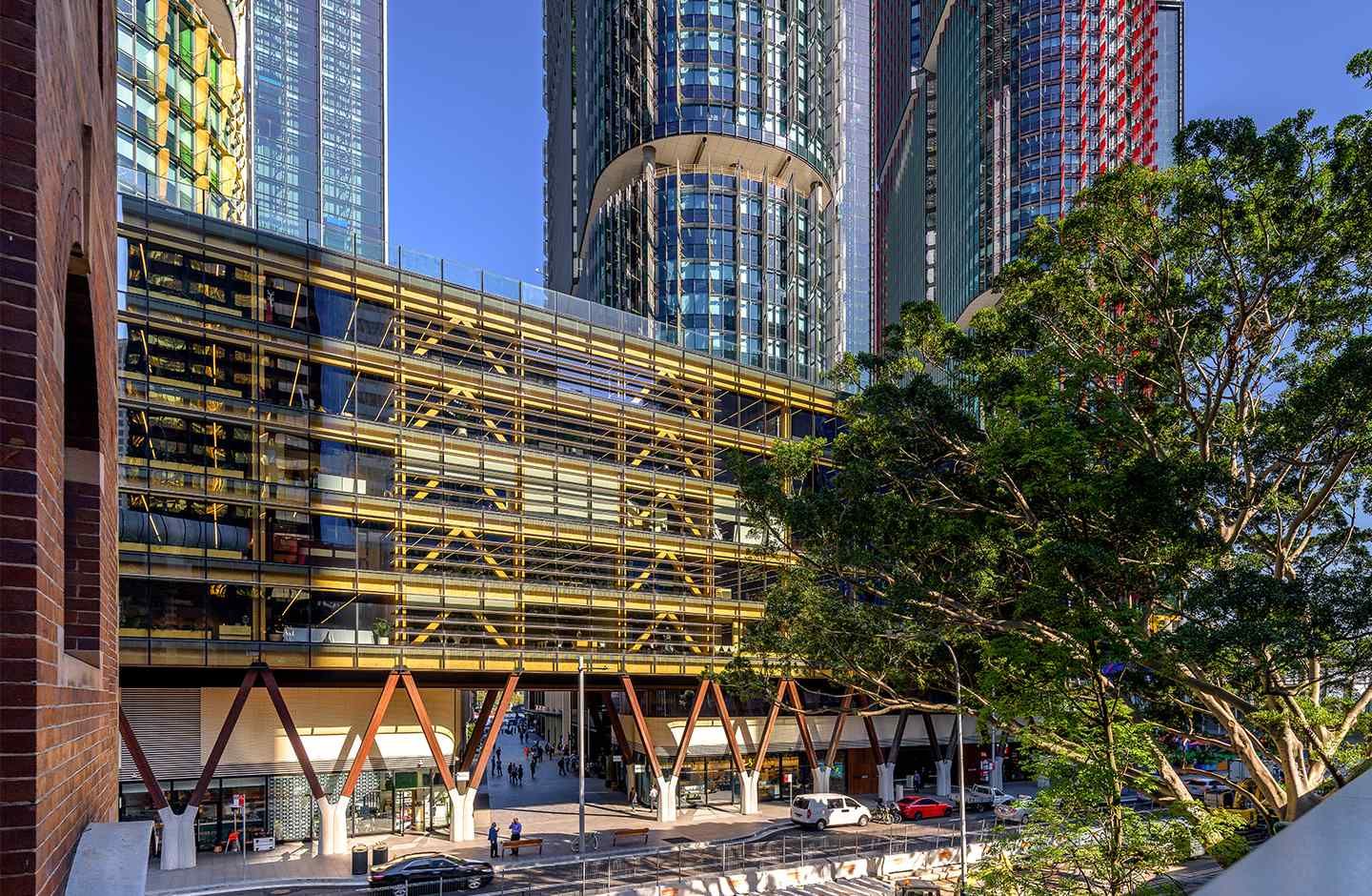
International House, which stands seven stories tall, is the world's largest commercial office building constructed with mass-engineered timber as its primary structural material.
Construction used approximately 3,500 cubic metres of sustainably grown and recycled timber. Thousands of tonnes of greenhouse gases were avoided by not using concrete. Hardwood timber is used for structure on the outside and softwood for interior design on the inside. The design takes advantage of the limitations of structural engineered mass timber and recycled hardwood, creating a strong visual presence and legible load path through the column and beam construction.
The structure's prefabrication provided a significant reduction in construction time as well as additional quality control achieved by off-site factory manufacturing. The timber components were fully prefabricated using a comprehensive 3D digital documentation process that coordinated every penetration, connection, and interface prior to procurement. International House Sydney is a model of placemaking architecture that minimizes negative environmental impacts in the built environment. It serves as a beacon for strategies aimed at the future of commercial building construction worldwide.
'Modern problems require modern solutions,' This sentiment is shared by many, especially when discussing the innovations that will address the problems caused by climate change. However, as demonstrated in this list, sustainable architecture using modern and traditional construction methods helps to exponentially increase energy savings and reduce co2 emissions among other possibilities.
Going forward, architects will need to start looking to the past for inspiration to advance to the future and prepare for the upcoming challenges that global warming and rising sea levels will present to our cities.
Do you want to join the innovative green architects of the future? If so, visit Novatr’s Resources page for inspiration and content that will help you build your skills. You can also check their BIM Professional Course for Architects V2.0 to upskill yourself.

 Thanks for connecting!
Thanks for connecting!

-3.png?width=767&height=168&name=MCD%20B%20(Course%20Banner)-3.png)
.jpg)
.png)

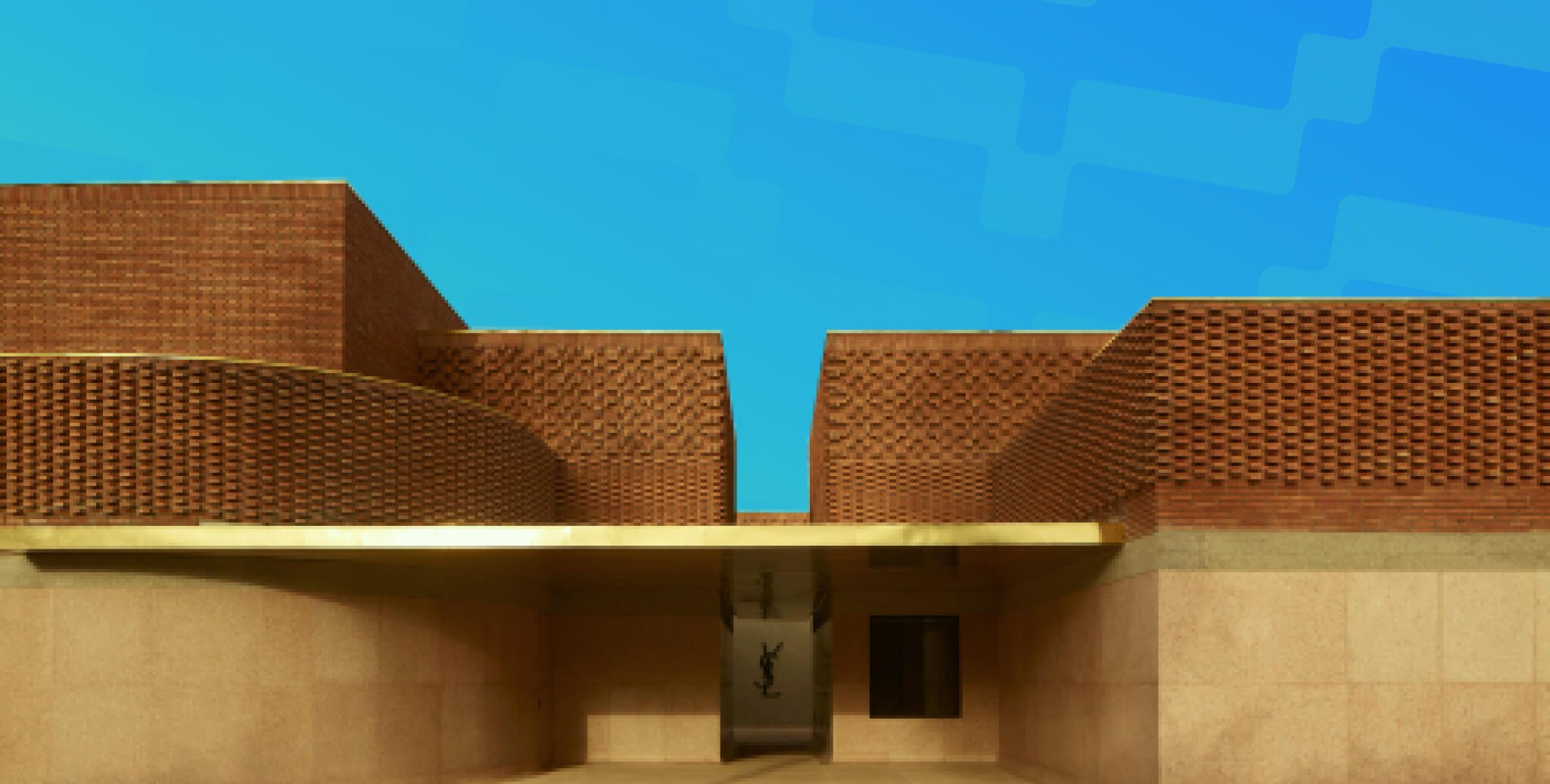
.jpg)
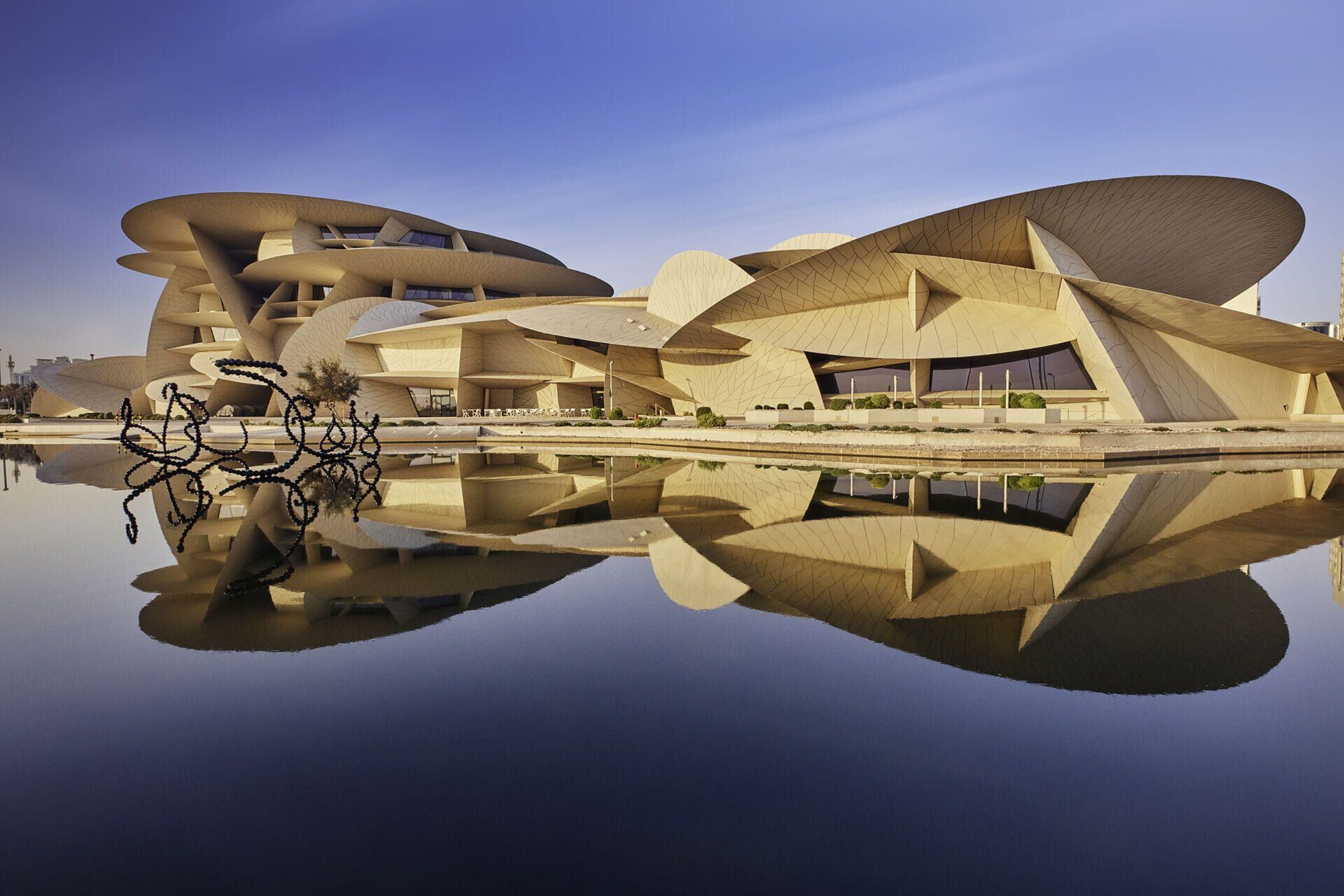
.jpg)
.png)
